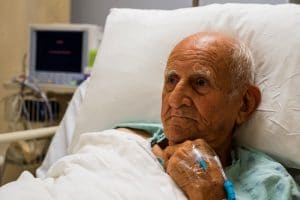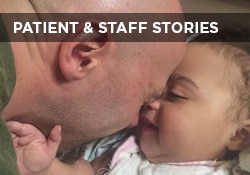This website uses cookies so that we can provide you with the best user experience possible. Cookie information is stored in your browser and performs functions such as recognising you when you return to our website and helping our team to understand which sections of the website you find most interesting and useful.

Susan E. Mazer, Ph.D. Blog
Thoughts and ideas on healthcare
Hi, and welcome to my blog! I'm Susan E. Mazer -- a knowledge expert and thought leader on how the environment of care impacts the patient experience. Topics I write about include safety, satisfaction, hospital noise, nursing, care at the bedside, and much more.
What Do Patient Satisfaction Surveys & the HCAHPS Survey Tell Us?
July 29, 2016
 There are many similarities between patient experience surveys and the HCAHPS survey. They are both directed to patients, they both have multiple-choice questions, and they are both used to help hospitals improve the quality of care.
There are many similarities between patient experience surveys and the HCAHPS survey. They are both directed to patients, they both have multiple-choice questions, and they are both used to help hospitals improve the quality of care.
And, yet, they each ask totally different questions and provide totally different kinds of information.
Breaking Down the Surveys
A patient satisfaction survey is like an elementary school report card, grading performance on a scale from excellent to poor. The survey is developed by the hospital as an investment in improving patient care.
Patient satisfaction survey results are not made public unless the hospital chooses to do so. Sometimes the survey is taken while the patient is still in the hospital, prior to discharge. Sometimes it is fully electronic and other times it is written. The outcomes are often used for marketing purposes.
Patient satisfaction surveys basically ask, “How well did we do?”
In contrast, the HCAHPS survey has been developed by the Centers for Medicaid and Medicare Services (CMS), is standardized nationally, and results are posted for all to see. Anyone in the U.S. can go the Medicare website and look for the best hospital in his or her community.
Hospitals have no involvement in developing the questions or tabulating the scores. And, poor scores may result in a reduction in reimbursements from CMS.
The HCAHPS survey basically asks,”What happened?”
Regardless of how much skill and research is used to develop either of these surveys, there is no survey that can accurately measure the value of a healthcare interaction in a way that is fully generalizable. Every patient experience is a unique experience; Every nurse and patient relationship is deeply personal and influences the futures of both patient and nurse.
Furthermore, every patient has his or her own perception of what happened and what mattered to him or her. More important, the details are lost because what happened is reduced to “always or never.”
Still, the surveys can provide important information.
Patient Satisfaction Surveys Are Based on Expectations
Patient satisfaction is the outcome of the expectations that patients have when they are admitted against what actually happened. How often were they delighted by receiving more than they expected?
More care, more attention, a quicker response, a nicer aide, a nurse who remembers who they are and what their greatest concerns are? Or, did they feel neglected, did their waiting become an insult and further imprinted that they were not a priority next to other patients?
Their fears begin, often prior to admission, with “Nurses will ignore me.” “The food will be terrible.” “I will never sleep.” If this actually happens, then their answers to all questions may be more negative.
Expectations lay the groundwork for the perception and interpretation of everything that happens. They set up the scale from 1-10, poorest to best.
HCAHPS Survey Measures What Happened
In many ways, the HCAHPS survey asks soft questions and offers limited choices in its answers. For example, in the questions about whether patients were treated with “courtesy and respect” by nurses and doctors, definitions are not provided nor is there any accommodation for the fact that there are numerous clinical and non-clinical caregivers who interact with patients.
And, given that in real life, few things happen “always,” if patients take literally what they are being asked, they may not know what to do if things were good “most of the time.”
The patient’s answer, therefore, forces all caregivers into a single pot. Courtesy and respect may also be confusing to patients who are looking for more than just those two qualities.
After all, shouldn’t patients be able to assume that they will be treated with courtesy and respect? Carl Rogers’ concept of “Unconditional positive regard” is far more valuable in this context. It means that the hospital, represented in each caregiver, accepts and respects each patient as they are without judgment or evaluation.
While this definition has been criticized as being too vague and not actually addressing the differences between individuals, in the case of ill and compromised patients, it does apply. It reflects the mission and ethics is all healthcare organizations. It is a step up from “courtesy and respect” and is better understood by all who interact with patients.
The HCAHPS survey does not provide actionable directions. It offers generalities that leave the details to those who are in control of the what happens: nurses, physicians, and everyone else on the hospital staff.
Any kind of specific preferences or needs, such as “prefers door closed at night,” “needs meals prior to any medication” or “requires assistance in going to the bathroom” become a test for the staff as to whether they care enough to pay attention on a consistent basis, across shifts and days.
What Really Matters
The bottom line is that the patient experience that is the most valued is when the patient feels visible and significant to those who are entrusted with their care. In other words, being treated with “unconditional positive regard.”
Patients need to not feel that they are “one among many.” They fear anonymity. They fear being forgotten. They fear not healing or recovering.
Is there a risk of these surveys becoming more important and more motivating than the patient in front of you?
If your meetings are taken up with HCAHPS issues instead of patient stories, there’s probably an imbalance. “Caring to the test” is not what any clinician signed up for when he or she went to nursing or medical school.
P.S. If you like this post, please do me a favor and share on LinkedIn, Twitter, Facebook, etc. Also to get automatic notices when a new post is published, subscribe (upper right). No spam – just great content. Thanks!










